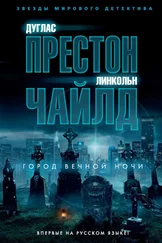There was a break in the action, and he took the opportunity to switch out the SD card in his camera, which was almost full.
All the lights, smoke machines, everything was now being moved down the stairs to the lower level. He waited, watching from the darkness, until they had vacated the upper chamber. As risky as it was, he realized he would have to get inside the tomb if he wanted to continue filming. The big event was evidently going to occur on the lower level, and that was something he couldn’t miss. It occurred to him that, if he was caught, the first thing they would do would be to confiscate his camera’s memory card. He plucked the full SD card from his pocket and hid it in his shoe.
At the opportune moment, when everyone’s attention was occupied, he ducked through the doorway into the mausoleum itself, crossed the upper chamber, and pressed himself against the wall next to the stairs that went deeper into the tomb. He could hear Betts’s voice coming up from below, telling Moller how they were going to work the next shot.
Crouching, practically on his belly, Wellstone crept into the doorway, edging the human skull aside so he could peer down the stairs. A humid, unpleasant smell rose up — not surprising, considering what was stored down there.
He raised his camera to his eye and once again began shooting.
It was the craziest thing, Gannon thought as she surveyed the lower level of the tomb. It had originally been a rather small room, not unlike the crypt above, lined with marble. The walls and ceiling were built from blocks of carved stone, damp and slimy with age. If anything, the crypts down here seemed even older than the ones in the upper chamber. The vandals had really gone to town: many of the crypts were smashed open, pieces of marble and bones strewn everywhere, along with rotten bits of clothing, shriveled ladies’ button-up boots with bones still inside, a pair of eyeglasses, and a mummified head swathed in gleaming long blond hair done up in braids, with two rotten ribbons.
But even more than that, it was what lay beyond that really struck her. Someone had torn down the back wall of the crypt, exposing an earthen passageway that — against all reason — went on into darkness, like a tunnel. It wasn’t a well-finished tunnel, either; it looked more like something picked or clawed out of the earth. Roots dangled down from above, and the floor was a sea of mud. Deep in the tunnel, she made out what appeared to be faint lights — like the glow of fireflies, only stationary. What the hell was that — some sort of glowing fungus?
The more she looked, the more inexplicable this find seemed to be. No mere vandals would have taken the time and effort to dig so long a passage, or one that tunneled so deep. Was it some sort of unfinished construction site, the crude first step toward enlarging the mausoleum to accommodate more dead? That hardly seemed likely. Besides, if someone had dug this tunnel, where had the earth been put?
“This is messed up,” Craig, the primary camera operator, muttered into the headset. “We shouldn’t be down here.”
Gannon didn’t answer. She could feel his nervousness. More than that: she shared it. Even macho-man Gregor was subdued and sweating. The air was close and foul.
“Gannon! You awake? Let’s get these lights set up.”
She looked up as Betts came over.
“This place is a gold mine,” Betts told her. “That tunnel over there, for example — it’s like a gift dropped into our laps. If I dug the thing myself, I couldn’t have made it look better. Worse, I mean. Anyway, here’s the plan: Moller’s going to move from the bottom of the stairs, over there; pick his way through all these bones and stuff; and head for the opening to that tunnel. I want some shots of all this stuff on the floor — especially, oh shit, is that some girl’s head? What a find. Get a good close-up. Think you can handle that?”
“Sure.” She swallowed. “Listen, I’m a little concerned.”
“About what?”
“This doesn’t feel right. I mean, is it even legal for us to be in here? Look at all these bones. Somebody trashed this place. Desecrated it. We can hardly move around without stepping on bones.”
Betts glared at her, then tilted his head back and laughed. “O- ho ! This is a fine place to find your conscience, in the middle of a shoot a hundred feet deep into a tomb.”
“Have you considered that what we’re doing might be illegal?”
“Of course I’ve considered it! Look, we didn’t break in. The door was open. The cemetery is a public venue. We have permission to be here. Even if we didn’t, we’re a documentary news team. We have a first amendment right to follow a news story, even onto private property.”
“But this isn’t really a news story.”
“Are you kidding? Moller’s going to find something down here. Something newsworthy. This is the first time I’ve seen the guy actually look excited.” He pointed toward the ragged mouth of the tunnel. “He says the source of the evil turbulence is down there, and when we reach it, he’s going to photograph it with that special camera of his.” He grasped her shoulder. “Gannon, this is no time to get cold feet. In for a penny, in for a pound. Am I right?”
“Right.” And he was right — sort of. This wasn’t like her. She’d shot footage at car accidents, fires, suicides, murder scenes, and she’d never flinched. But this... this was different. The bones, the tunnel, and the awful smell that clung to everything had spooked her.
She took a deep breath and went back to work, briskly telling Gregor where to put the lights, repositioning the fog machine, working out her exposures. Gregor was unusually cooperative and subdued, and she could see that he was genuinely spooked. This, if nothing else, was a refreshing change. Maybe he should be scared more often. The only one who seemed unaffected, in fact, was Pavel, the Steadicam operator. He looked, as always, as if he was on the verge of falling asleep. Staring at his heavy-lidded, drooping eyes helped to calm her down — if only a little.
“The rest of the story can be quickly summarized,” Constance said. “She didn’t tell me how she spent the two decades between her Midwest sojourn and coming to Savannah, but by the time she arrived here, she was wealthy. She told me she liked the idea of rescuing a historic building and restoring it into an upscale hotel. On a visit to Savannah she fell in love with the city and found the right building. She bought the abandoned factory and rebirthed it as the Chandler House. It would be a place where she could indulge in her love of books, paintings, and music. She became an imperious and eccentric proprietress, brilliant and commanding. She continued to make profitable trades but never let herself become seduced by the machine. She realized that it would be dangerous to push the technology further, even as computing power vastly increased over the years. She made just enough money to live well and have all she wanted, but not beyond. She naturally kept the device secret.”
“Who could you trust with it?” Coldmoon mused.
“Precisely the conundrum,” said Constance. “So the years passed. And passed. And passed. Eventually, she felt age beginning to creep up on her.”
She fell silent for a moment, and the moment lengthened. Confused, Coldmoon looked from Constance to Pendergast and back again.
“More and more,” she resumed, “she began turning to Patrick Ellerby, her hotel manager, for help. He had started as assistant manager, a handsome and somewhat roguish fellow. Exactly how the two became so close is something Frost refused to discuss. It’s clear she felt a genuine affection for him. I think to some degree he served as a replacement for Dr. Quincy: empathetic, a little awkward perhaps, independent, fond of poetry and mathematics. But unlike Quincy, Ellerby wasn’t an honorable man. He saw in Frost a route to a comfortable existence for himself. Perhaps he began to work upon her in the mode of The Aspern Papers , ingratiating himself, romancing her, gaining her trust. In time, she shared her deepest secret with him: the machine she had secretly set up in the basement, and just as importantly, the physics behind how it operated. This is, essentially, the same information she gave me in response to our third question: How can this machine see into the future? And this provided a lot of the science underpinning what Aloysius has just explained, along with—”
Читать дальше
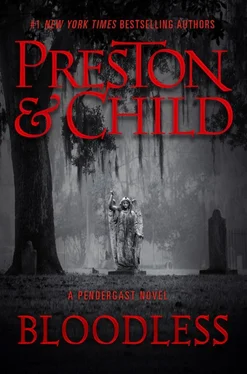

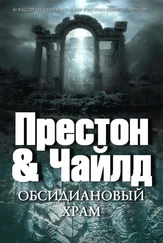
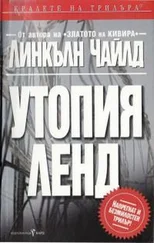



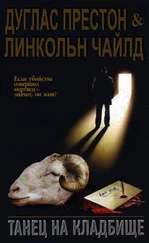

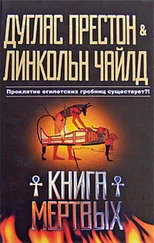
![Линкольн Чайлд - Стихи для мертвецов [litres]](/books/396536/linkoln-chajld-stihi-dlya-mertvecov-litres-thumb.webp)

